Top Predators May Be the Most Important Animals on Earth

image via Travelbag Ltd
Humans have always had a complicated relationship with other predators. Grizzly bears, crocodiles, great white sharksthese are among our planet's most awe-inspiring creatures. Still, we'd never want these deadly animals in our backyards. But new scientific evidence suggests that we need them far more than we realized.
Whatever your personal feelings about Earth's most powerful beasts may be, there's no denying their critical importance to our planet. Mountain lions are doing more than just keeping deer in check. Their footprints ripple through ecosystems, shaping everything from the number and types of plants and animals that live there, to which diseases will break out.
Snow leopard bearing its teeth. Image: Wikimedia
To understand why Earth's top predators matter (and why they're vulnerable), we need to start at the bottom. All ecosystems have a fixed energy budget, dictated by the number of primary producersplants on the land, photosynthetic microbes in the ocean. If we imagine the food chain to be staircase, as we travel to higher steps ecologists call these "trophic levels"the available energy declines, roughly by a factor of ten for each step up. That means, in an ecosystem with one plant, herbivore and carnivore, the plants will collectively contain 100 times more energy in their biomass than the carnivores.
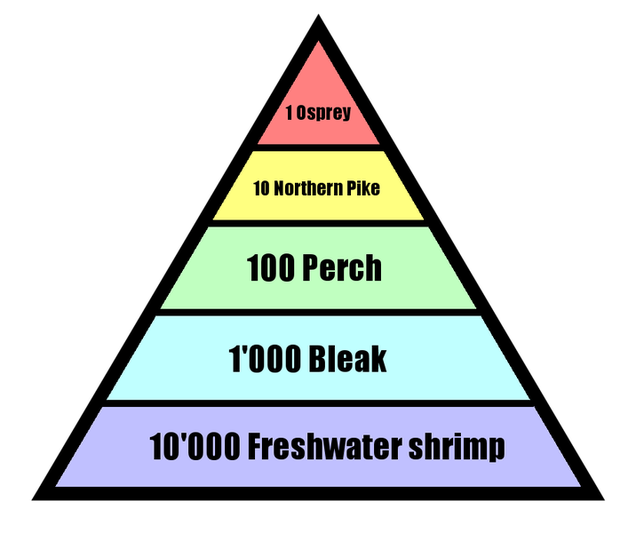
It's lonely at the top, as illustrated by this simple trophic pyramid. Image: Wikimedia
This energy constraint is the fundamental reason top predators are so rare. Many food webs consist of half a dozen or more trophic levels, and by the time you get to the top, there's simply not that much energy left. What's more, top predators are typically energy-hoarders: They're large, and need to eat lots of calories in order to hunt. The Siberian tigerthe world's largest catweighs up to 700 pounds and can pack away sixty pounds of meat in a single meal.
It's t heir naturally small populations that also leave these predators vulnerable. Indeed, since prehistoric times, humans have had a hand in driving massive predators extinct, including saber-toothed cats and giant reptiles . More recently, habitat destruction and poaching have pushed many key predators, including the Siberian tiger, the great white shark and the Ethiopian wolf, to the brink of extinction. And when predators disappear, ecosystems start to unravel.
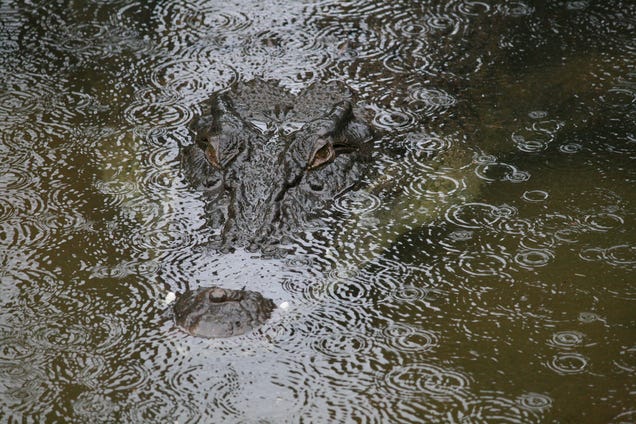
The saltwater crocodile is the largest of all living reptiles, maxing out at 4,400 pounds . Image: Mike / Flickr
Cascading Effects
When an ecosystem loses a key species, it triggers what ecologists call a trophic cascade a butterfly effect that spirals down the food chain. A well-documented case study for this phenomenon is the gray wolf , once among the world's most widely distributed mammals. Historically, gray wolves roamed the entire northern half of the Americas, but by the mid 20th century, aggressive hunting campaigns had all but eliminated wolves from the lower 48 U.S. states.
Prior to their extirpation, North American gray wolves were a key predator of deer, elk, moose, bison and caribou, as well as numerous smaller mammals. Following the wolves disappearance, the abundance of deer skyrocketed, with some populations climbing to six times their historical size. Unchecked, deer are like lawn mowers, stripping bark off of trees and decimating understory plants. This, in turn, can diminish the amount of carbon a forest stores, impact plant diversity, and weaken the forest's resilience to future disturbances. As reported last year in Science, the recent reintroduction of wolves to Yellowstone National Park has allowed some of the most deer-decimated stands of forest to heal, increasing their carbon sequestration potential.

Image: Wikimedia
Wolves also manage Canadian forests by managing herbivoresin this case, moose. As voracious tree munchers, an unchecked population of moose can eat through enough leaves to literally stunt a forest, reducing its ability to take up and store carbon. A study published last year in the journal Ecosystems concluded that restoring gray wolves to their historical population size could, in theory, increase the amount of carbon sequestered in the Canadian boreal by an amount roughly equivalent to Canada's annual human-made carbon emissions.
Wolves provide other crucial services as well, such as quelling the spread of infectious disease. In recent decades, Lyme disease, a tickborne illness found across North America, has been on the upswing, with some areas seeing a 1000 percent rise in disease incidence. A 2012 study which appeared in the Proceedings of the National Academies of Sciences demonstrated how the spread of Lyme disease is the result of a complex trophic cascade beginning at the top of the food chain. Since the disappearance of gray wolves, coyotes have, in many places, been elevated to top-predator status. Coyotes prey on smaller carnivores including foxes, which in turn hunt small, herbivorous mammalsthe primary carriers of disease-ridden ticks. More coyotes means fewer foxes, causing populations of Lyme disease-carrying rodents to boom.
It's clear from ecological studies that wolves do far more than just keep the deer in checkthey're the lynchpin holding together the very fabric of their world. But when it comes to top predators, there are many other fascinating case studies, some hailing from parts of the planet we're much less familiar with.
Ocean Predators
In the remote Southern Ocean that encircles Antarctica, sperm whales reign supreme. The largest toothed predator on the planet, a sperm whale can reach lengths of up to 52 feet and plunge to depths of 2,250 meters to hunt giant squid. But more than just powerful hunters, sperm whales are a critical sources of fertilizer. Or, at least, their excrement is.
After consuming prey at depth, sperm whales return to the surface to spew out iron-rich plumes of defecant. These so-called "poo-namis" are like Miracle Grow for phytoplankton, the photosynthetic microbes that collectively account for 50 percent of the carbon drawn out of our atmosphere every year. A study published in the Proceedings of the Royal Society B found that these sperm whale shit-storms are responsible for roughly 200 thousand tons of carbon sequestration in the deep ocean every year. Two hundred thousand tonsall thanks to excrement. Before industrial whaling dramatically shrank sperm whale populations, that carbon sink could have been up to ten times greater.
Of course, it'd be unfair to talk about critical ocean predators without mentioning sharks. To get the scoop on Earth's most iconic toothy fish, I spoke with University of Miami marine ecologist David Shiffman , a shark advocate who also writes at Southern Fried Science . Sharks, it turns out, can also wear many different hats in an ecosystem. For instance, in addition to being skilled hunters, some sharks are professional fear-mongers.
"The most common way people think of sharks influencing the food web is by eating other animals," Shiffman told me. "But a lot of research has shown that the bigger way sharks make an impact is by influencing the behavior of their prey." Basically, they convince creatures in the rest of the ocean to stay the hell away.

Juvenile tiger shark in the Bahamas.Image: Wikimedia
"The presence of tiger sharks can influence the behavior of dolphins, sea turtles, fish, even birds," Shiffman said. "And if the areas that herbivores forage are dictated by sharks, this can influence the whole food web." Indeed, ongoing studies at the Shark Bay Ecosystem Research Project are showing how shark avoidance can indirectly impact the structure of the marine seagrass beds, which form the physical architecture of the ecosystem.
An Uncertain Future
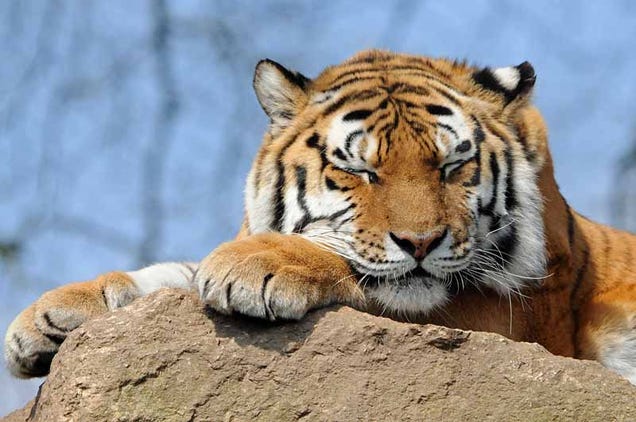
The Siberian tiger is among the most threatened of Earth's large cats. Image: Ross Elliot / Flickr
There are plenty of other predators with well-documented ecological impacts, aside from the handful I've discussed here. But more common still are the predators whose roles we don't understand, because we haven't taken the time to study them. Unfortunately, many of these species are disappearing just as we begin to appreciate the myriad ways in which they shepherd their environments.
Of the 31 largest mammals in the order Carnivoraa list which includes wolves, giant cats, bears and hyenas61 percent are listed as threatened by the International Union for the Conservation of Nature. Seventy seven percent are in decline . Writing in Science on how the disappearance of top carnivores may affect ecosystems worldwide, a group of environmental scientists state that " we should expect surprises, because we have only just begun to understand the influences of these animals on the fabric of nature."
Included among those surprise impacts is how the loss of Earth's top carnivores may affect us. Earth's largest predators have inspired our stories, mythologies and artwork since the dawn of culture. Losing them is more than a loss to the environmentit's a loss to humanity.
Top Predators May Be the Most Important Animals on Earth , by Maddie Stone , Gizmodo

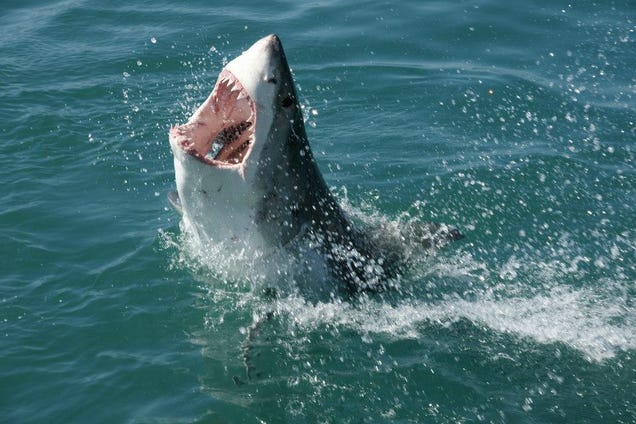
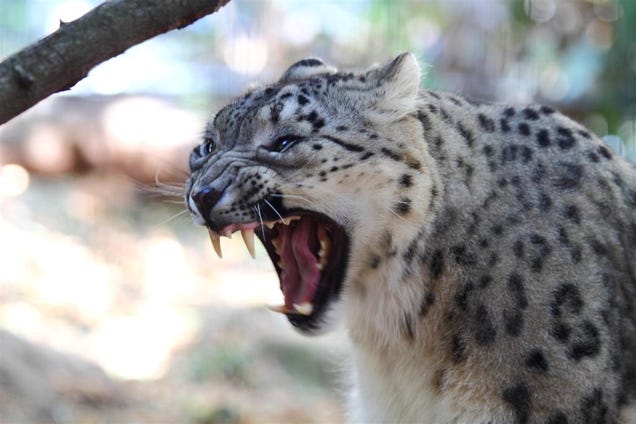




Sharks and tigers and whales... How could it not be cool??
Interesting study! I'd love to see our own pyramid, as humans... Of course, it would be complicated!
Having grown up around wolves, bobcat, bears, all top predators, it is simply amazing to see how they affect all of the environment, not just the food chain.
I found the segment about wolves and moose to be particularly expressive.
That is was Bob, Mother Nature set up the perfect cycle, we as humans, have really screwed it up.
Great article, Bob! Very enjoyable and informative!
And yes, Kavika, we do manage to screw it up, royally.
All creatures great and small. though I personally feel like we could do without spiders.
:~)
They're cute:
He/she will require two pair of sunglasses. I'd recommend, ''Foster Grants''..
Spider Women?
For someone with active arachnophobia, that picture is very confusing to the psyche!
It's also very confusing to mine, but for an entirely different reason.
Isn't mother nature the reason humans are what they are today? If this isn't what she intended why did she make it this way?
I don't know what you are trying to say, Dean. Why don't you try a few declarative sentences to explainyourself, rather than questions that require us to make guesses?
Kavika says mother nature set up the perfect cycle and humans really screwed it up. If mother nature set up the perfect cycle than it is what it is because humans are also a product of mother nature.
Yeswe areproducts of mother nature, but we have upset the balance, that is the problem. Everything is inter linked, and as you know, we have destroyed creatures that keep it in balance.
It's actually pretty simple.
Ah ! The importance of free will! Animals do as they do because it is innate.
Humans choose their behavior.